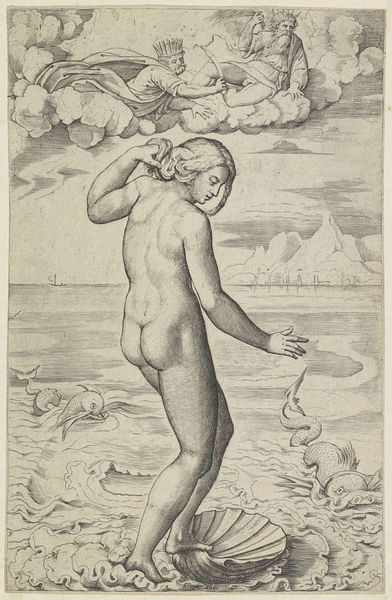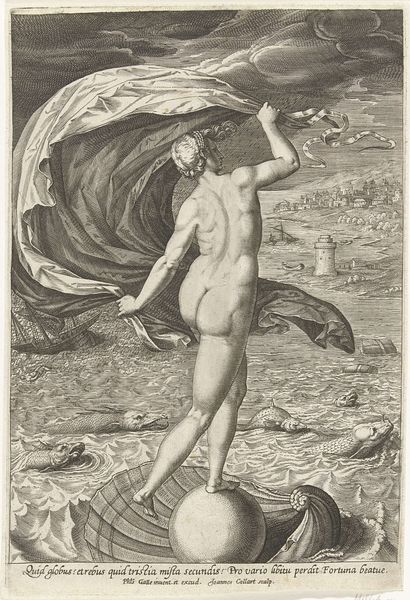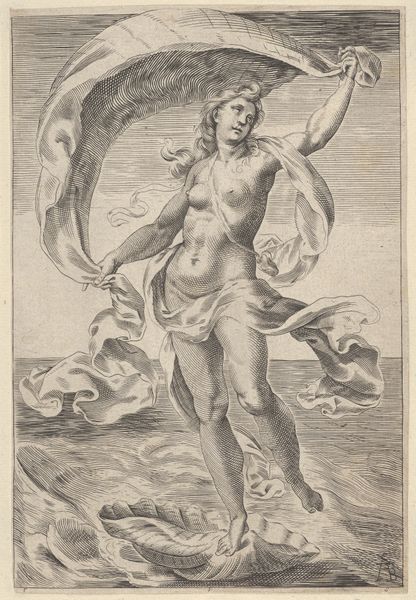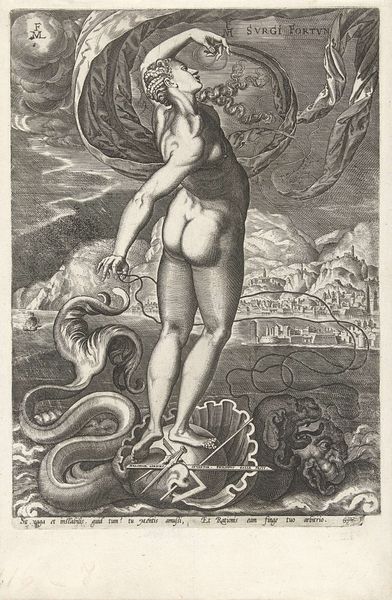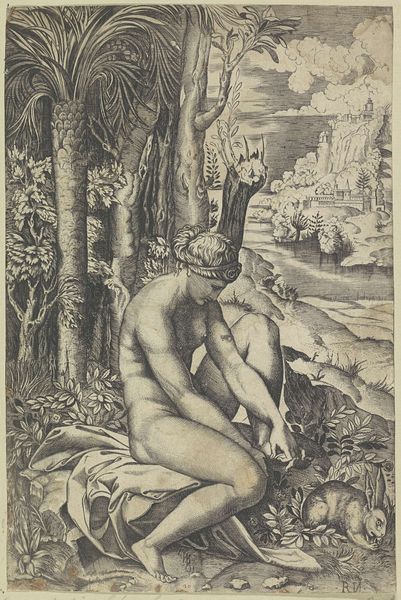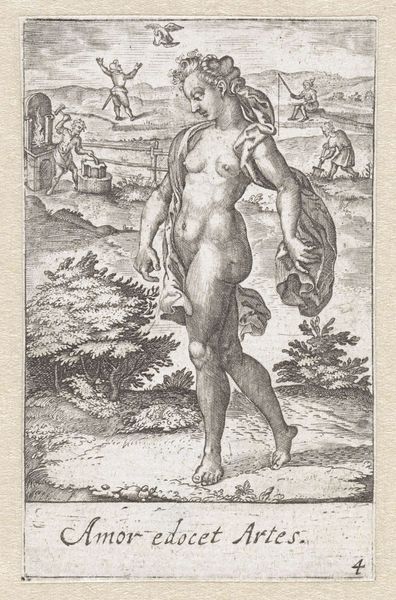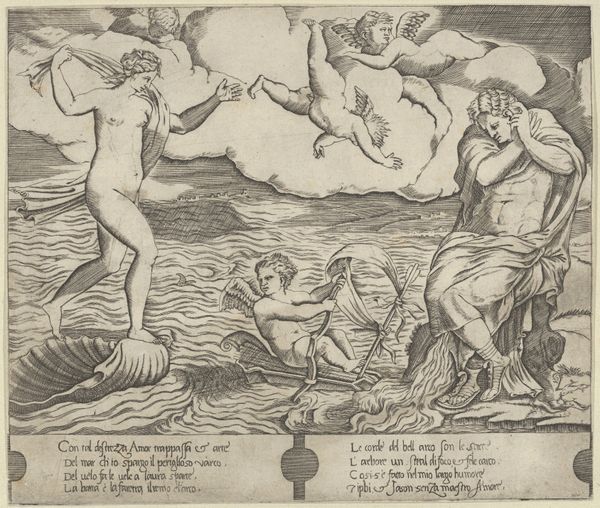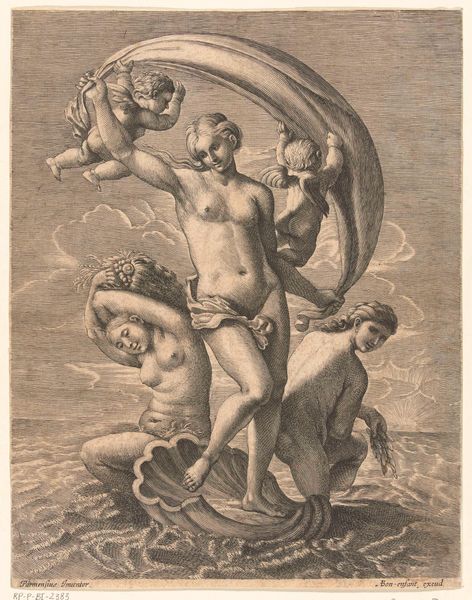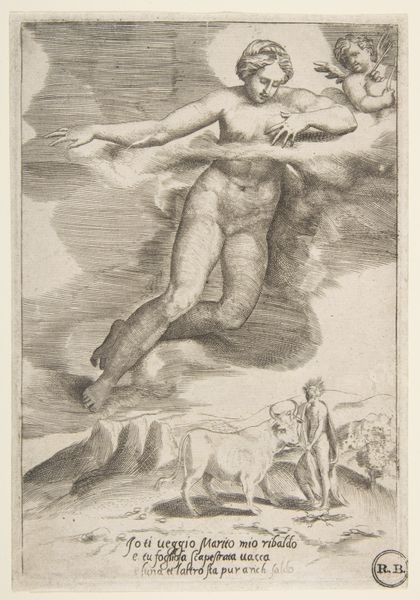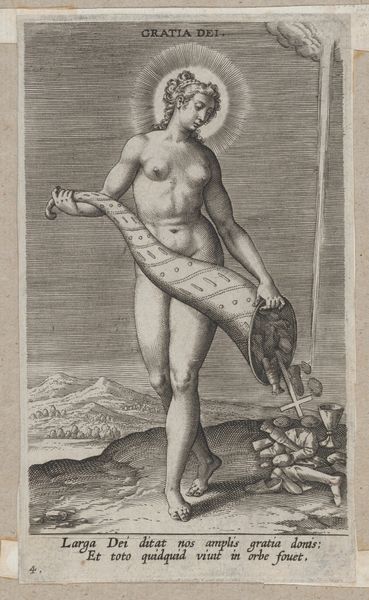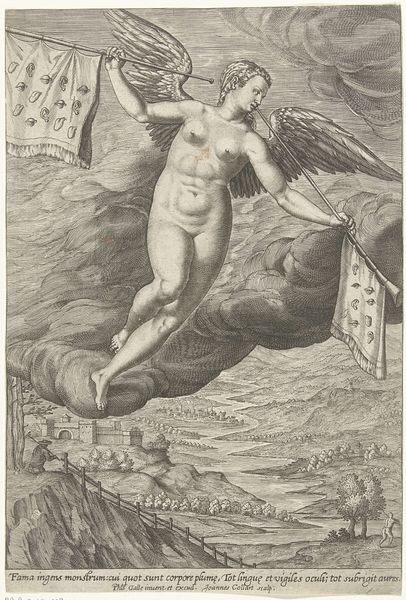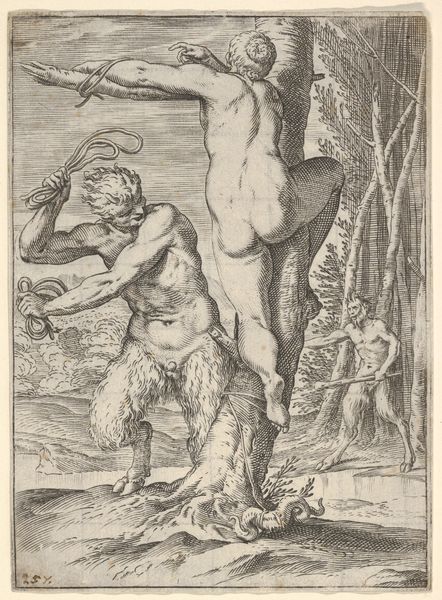
Dimensions: height 260 mm, width 172 mm
Copyright: Rijks Museum: Open Domain
Around 1515, Marco Dente created this engraving of ‘The Birth of Venus’ now held at the Rijksmuseum. Engraving is an intaglio printmaking process, where the artist uses a tool called a burin to carve lines into a metal plate, usually copper. The plate is then inked, and the ink is wiped from the surface, remaining only in the incised lines. Paper is laid on top and run through a press, transferring the ink and creating the print. Dente skillfully used the burin to create fine, detailed lines, which define the forms and textures in the image. Note the precise hatching and cross-hatching to create the illusion of depth, volume and shading. The density of the lines gives areas of the image a darker tone, while lighter areas have fewer lines. Printmaking, while requiring skill and artistry, also allowed for the reproduction and distribution of images, playing a significant role in disseminating knowledge and artistic ideas. This artwork invites us to consider the labour involved in its production and the way it facilitated the spread of classical themes during the Renaissance.
Comments
No comments
Be the first to comment and join the conversation on the ultimate creative platform.
